This was a very good test. You, sir, picked a very good song for this test (in the sense that it’s very hard to tell the difference). It took me several listenings to pick out the correct one (which i did manage).
Now i want to point out a few things here.
First of all, you didn’t specify how the encoding was done and with which encoder. You see, 128 kbit MP3s are typically ALWAYS encoded in Joint Stereo by most modern encoders, while 320 kbit MP3’s can often vary between normal Stereo and Joint Stereo. The result here is that if the 128 kbit clip is Joint Stereo and the 320 kbit clip is Stereo, then this quality test comes closer to comparing 128 kbit with 192 kbit (and not 320, qualitywise). This might distort the result of the testing. When using a proper MP3 encoder (LAME 3.99!!!) always use Joint Stereo.
 Now, to all of the people out there who are saying that they can’t hear the difference i got a newsflash for you: Ripping your music in higher quality isn’t just about making it sound better. Even if you yourself can’t hear any difference between 128 and a higher quality (192, 256, 320, whatever), there are other aspects of music quality that makes it preferable to rip at higher quality.
Now, to all of the people out there who are saying that they can’t hear the difference i got a newsflash for you: Ripping your music in higher quality isn’t just about making it sound better. Even if you yourself can’t hear any difference between 128 and a higher quality (192, 256, 320, whatever), there are other aspects of music quality that makes it preferable to rip at higher quality.
You see, listening to low quality music for extended periods of time (especially at high volume) causes hearing fatique. So even if you can’t hear a difference, the lower the quality of the music, the faster you will eventually have to turn down the volume or take a listening break. If you are one of those people who, like me, has a quality headset for your iPod/MP3 player, and likes to keep a decently high volume for a great experience, then having your music in at least 192 kbit Joint Stereo encoding is VERY preferable.
For people out there who are considering ripping their CD’s music, here is a list of rules of thumb to follow for the “general” consumer:
- If ripping to MP3, always use Joint Stereo (and VBR if available rather than CBR), and make sure you rip with a recent version of the LAME encoder since it’s the best MP3 encoder on the market.
- You should never rip to lower than 192 kbit (Joint Stereo) to ensure decent quality.
- If Ripping with iTunes, choose to rip to AAC files rather than MP3 files. First of all, the iTunes MP3 encoder isn’t particularly good. And second of all, AAC in general has a ~20-25% increased quality at a given bitrate (128 kbit AAC files sound about as good as 160 kbit MP3 files) except at very high bitrates where it’s the qualms and issues of the general encoder that matters more. In addition, AAC always encodes in Joint Stereo, which is always preferable with a good encoder. I recommend the following settings in iTunes for CD ripping (you can adjust to a higher or lower bitrate if you want to conserve space, but i don’t recommend going below 192). It’s in Danish, but I’m sure you can replicate the settings in your own language.
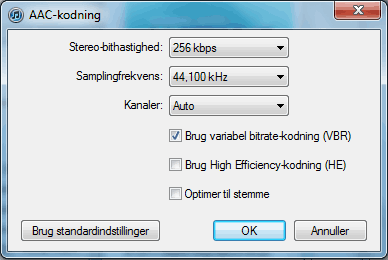
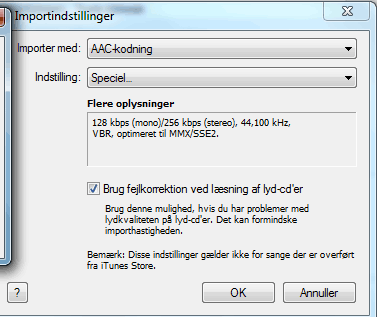


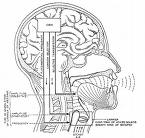
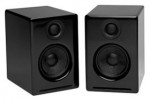
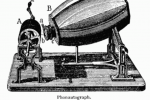
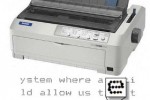
>use joint stereo / ms stereo for archival
nope
>use an encoder version still full of regressions and crap
nope
CBR -q 2 -b 320 -m s (a.k.a. FAILSAFE archival)
VBR -V 0 -j s (not-so-picky SPACE CONSERVING setup)
ABR -no -no -no (ABR is mainly for targeted LOW bitrates and filesizes, with lowest universal compatibility though.)
Also waiting for foobar 1.1.10 because 1.1.8 and above are just betas released to demanding public AGAIN.
Same for LAME 3.99, waiting for 3.99.1 hoping they get everything sorted by then and receive a reference encoder status.
Reluctantly using 3.98.4 because 3.97 lacks the required iso compliance (not referring to strict, but the default) and few other things.
And it won’t be long until iTunes starts promoting ALAC / Lossless big time. Apple is already paving the way by attempting to get it some grass root-level promotion.
And no i don’t see open sourcing ALAC as a particularly good or important thing since Apple never does anything out of mere goodwill.
FLAC will still be free as in freedom and a long standing standard to boot. reference libFLAC 1.2.1 20070917 for the win
As for AAC (and) MP3, ogg is the answer. Maximum bitrate is higher too so it extends the usability of lossy archival.